After a bit of – drought, it’s review bonanza week: at the opposite ends of the spectrum. First we had the Sony RX100 Mark III, and today will be the first part of the Pentax 645Z review; to be split into an assessment of the camera itself and a relative comparison to its predecessor, a previous generation CCD-equipped Hasselblad CFV-39 digital back, and the Nikon D800E. As far as I can tell, this is the first review of a production 645Z, anywhere. This part alone is going to be a 4500+ word monster, so grab a large coffee and settle in for a bit. Unfortunately the weather at the moment in Kuala Lumpur is extremely hazy – 120+ APIs thanks to various burning vegetation – which is not ideal for camera reviewing. However, as the 645Z is part of my personal equipment, bought at retail from Malaysia, it will be with me for some time and be subject to mid and long term updates – much like the Nikon D800E.
Let us begin. I know my reviews are already long; this is likely to be longer still because there’s a lot to cover. As a starter, you may want to read my early thoughts on the 645Z immediately following it’s announcement. Though the Z’s body design is not new – it shares most of the external and internal layout with the 2010 645D – it is somewhat unusual for modern medium format digital in that the design is completely integrated and the sensor/ processor portion is not removable or replaceable. This also means the body can be weather sealed to the same extent as the best conventional DSLRs, and in fact, the Z handles very much like one of those – albeit a very, very large one. Not all of Pentax’s lenses are weather sealed, however – only the 25, 55 and 90mm lenses enjoy the same level of environmental protection. The seals appear to be fairly robust and I’d be confident of using it in inclement weather.
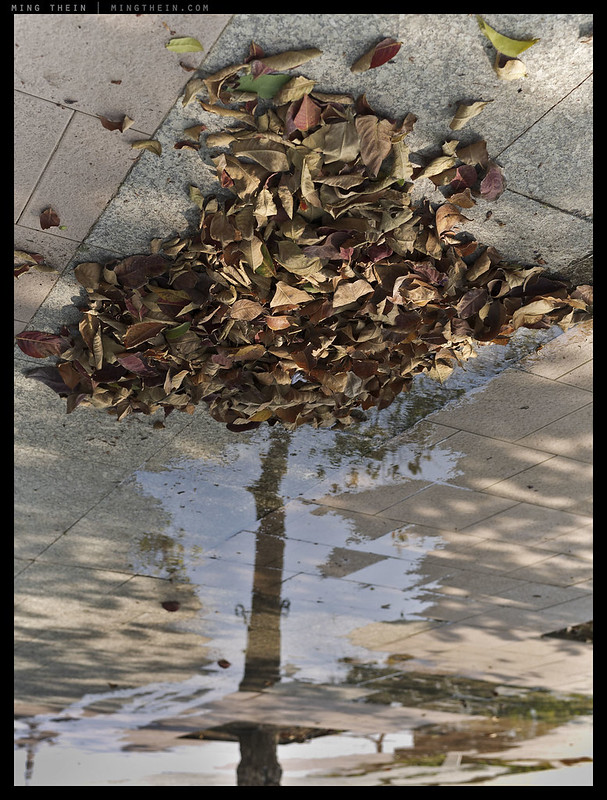
The reformed tree – available to buy as a 12×15″ Ultraprint in a limited series of 20, here. Please remember to include your phone number in the comment box for the shipper – thanks!
The 645Z shares a 51MP, anti-alias-free 33x44mm Sony CMOS sensor with the Hasselblad H5D-50C and Phase One IQ250; both of which are significantly more expensive cameras. This trip represent the first time CMOS has made an appearance in ‘medium format’* digital – cameras larger than 35mm, at any rate. There have been a lot of concerns over the tonal rendition of CMOS compared to CCD; having a bit of experience with both, I’m inclined to prefer the native tonal look and color of CCD, but the lower noise, latitude and linearity of CMOS. Unfortunately, you cannot have it both ways. My solution thus far has been to shoot the CCD digital back when I know I’m unlikely to require heavy tonal edits and use output that’s fairly close to out of camera, and develop a workflow for the CMOS cameras – the D800E, basically – for everything else, including custom color profiles. I understand from several in the industry that the underlying photosite technology in this trio of cameras is an evolution of that which debuted in the D800 two years ago. This means we can expect live view, video recording, huge dynamic range, a very low noise floor, surprising high ISO capability, and excellent acuity. Color accuracy should be very good but still not quite up to the medium format CCD backs. I’ll return to whether this really is the case or not later on. In short: medium format’s shooting envelope has just greatly expanded.
*I use quotation marks because 33×44 is to 645 much like APS-C is to full frame, and nowhere near the much larger 6×6, 6×7 and 6×9 formats also common in the film world.
The 645Z is a really solid lump of metal; a more awkward shape than most DSLRs owing to the longer flange back distance inherited from the film 645 system. It’s ergonomically well-thought out with most major controls falling under the fingers of your right hand or thumb of your left (if you cradle the lens with your left). There have been some minor button moves and reassignments from the 645D to accommodate the tilting screen; I personally think these are an improvement, and I definitely want the waist level finder option in case I miss my Hasselblad. The viewfinder is larger than the 35mm full frame cameras, but not that large; smaller than my Hasselblad and HC-4 prism, for instance. It’s enough to gauge focus accuracy for most lenses, but you’d better use live view for critical applications and wider lenses whose depth of field transition profile is too shallow. No point in throwing away all of that extra resolution; it came at a premium.
Camera design is now mature enough that there really shouldn’t be any handling issues on equipment of this price or level; and there aren’t. The button assignment, menus and mode dial memory positions are hugely customizable and flexible. I spent a month with the previous 645Z to familiarize myself with the handling and operation, as well as to test the lenses I’d acquired in advance. Even if I hadn’t, the controls are plenty logical and wouldn’t have required much familiarization time coming from my usual Nikons. If anything, there’s almost too much information presented to you – though the back screen is useful, all of the critical things you need to know are easily gleaned by looking at the position of the knobs or the top panel LCD; the back LCD duplicates much information, is very bright/ conspicuous and I suspect also power hungry. Fortunately, it can easily be turned off, and the camera will remember this setting (or you can append it to one of the custom U1-3 modes on the dial, though I wish there was a way to save and export these settings to a card – both U1-3 and the custom functions). The only thing I don’t like about handling is that it’s too easy to press the buttons on the camera’s left shoulder unintentionally when shooting in portrait orientation. That said, there is a customizable lock button to disable these buttons (and others, if you wish) and provision of two tripod mounts is a very useful touch. It means that a standard 90° L bracket off eBay will do a great job without having to pay even more for a custom unit.
Now is probably also a good time to mention remote control options; like every other manufacturer out there (but few medium format ones) the camera can be operated wirelessly over wifi plus a smartphone/ tablet app – but only with the optional proprietary Pentax FluCard wireless SD. I haven’t had a chance to test this yet, but I could see it coming in useful for longer exposures, light painting, etc. – most of which I do very little (or none) of, but would like to try at some point. Most medium format shooters are used to operating tethered – partially because the monitors on all but a few of the latest generation digital backs are utterly abysmal (really only useful for confirming the camera took a picture, checking the histogram, and perhaps changing a setting or two) and partially because focus confirmation becomes more critical**. The 645Z will operate tethered over USB3 – not Firewire – but I think the larger screen combined with wireless review of JPEGs (forget trying to send the enormous raw files over wifi in a hurry) will prove to be more than sufficient here.
**And there are also clients who simply like to watch.
The 645Z inherits the K-3’s 27-point AF system, 25 of which are cross-type. This is useful for off-center subjects and the greater precision required for focusing medium format due to shallower depth of field for a given aperture and angle of view. The only downside is that all of the points are clustered near the center of the frame, as the system was originally designed for APS-C. Still, it’s the only medium format camera to have more than one AF point at all. It will track moving subjects, but not that well – I have a feeling this also has a lot to do with the some of the older lenses’ drive systems having some backlash in the gearing (they’re driven by a motor in the camera body). For static subjects however, it’s accurate and snappy – more so with SDM lenses – and if it isn’t accurate enough, it can be fine tuned easily. This was the first order of business with my camera to obtain optimal performance. Subjectively, I find it feels faster than the Hasselblad H5, a little behind the D800E but light years ahead of its predecessor. Metering also deserves a notable mention here, because matrix just seems to always get the exposure right – you have the option to bias exposure towards the area underneath the AF point or not (partial spot, I suppose) – which is something the new Nikons sorely need but lack. It feels like the Nikon matrix meter in the ‘good old D3 days’ – when it was less likely to surprise you. I do wish we had the option to set lowest shutter speed thresholds with auto ISO though; the ‘slow-medium-fast’ program with respect to lens focal length doesn’t go fast enough to really be assured of sufficient shutter speed to avoid hand shake. That said, there IS the TAV mode which will set ISO based on your aperture/ shutter requirements, but it isn’t quite the same as it doesn’t allow an unbounded upper shutter speed. Useful at night, though.
The Pentax 645 system has quite a number of lenses available – either new or used off the usual second hand sources. However, not all of these lenses are equal performers, and for the most part, only the newer lenses – with built in motors and weather sealing – perform adequately wide open for digital, especially the 645Z. There are also a host of manual focus options which will also work, but you really need the impossible to find and out of production split prism screens to make the most of them – though if you work mainly off a tripod, live view is an option. However, what I do find glaringly missing is a decent normal zoom and tilt shifts. There’s also an enormous difference in price (but not quality) between buying the older screwdriver focus lenses new vs used; no idea why. As with all other new medium format lenses, the newer sealed SDM versions will empty your bank account very quickly. It’s also worth noting that manual focus lenses (or AF lenses in manual focus mode) will beep once the camera thinks the lens is in focus – a very useful touch. I believe the trigger point for this is also affected by the AF fine tune setting, but further testing is needed to confirm this.
Prior to even seriously considering the camera, I spent a significant amount of time determining which lenses were adequate, which were good, and which would serve my purposes – I landed up purchasing the D-FA 25/4 SDM, D-FA 55/2.8 SDM, FA 75/2.8, D-FA 90/2.8 SR Macro SDM and FA 200/4. The 55 and 90 SR lenses are excellent; the 25 needs to be stopped down a bit to reach excellence, and the 200 is not bad if you can nail focus precisely. The 75 is so-so wide open, better stopped down, but has focusing issues – it’s just outside AF microadjustment range. The older screwdriver AF lenses don’t seem to focus very precisely; both of them consistently back focus on both my 645Z and the loan 645D. I suspect there are some differences in the tolerances involved for film vs digital capture. By comparison, the SDM lenses required very little to no adjustment.
With cameras of this resolution come serious considerations of shot discipline, shutter and mirror design: if there’s too much recoil, vibration or it’s difficult to hold the camera steady, then you’re going to find all of that extra resolution you’ve paid for disappearing very quickly indeed. A lot of us – myself included – learned this the hard way with the D800E; not only did 1/focal length become insufficient, 1/2x was marginal under ideal conditions. And nailing focus becomes really very critical indeed. There are of course other factors beyond resolution which dictate the minimum shutter speed one can ‘get away with’ – your threshold of acceptability for acuity, for instance. I personally junk anything that isn’t perfect at 100%; with this as a benchmark, I find that 1/2x is sufficient for a D800E, and was expecting to need 1/3x or higher with the 645Z – however, it seems that the shutter and mirror mechanism combined with the mass of the camera is sufficiently well-damped that 1/2x stands, or 1/1x or slightly lower for the SR-enabled 90 macro (which also happens to be the only medium format lens of any kind with an optical stabiliser).
The mirror/ shutter mechanism might be loud, but it’s well-damped. It’s also different from the unit in the 645D, which has different acoustics and a lower 50,000 shot life (the 645Z is 100,000 – and I’ve burned about 1% of that already in the testing/ reviewing process). And mirror lockup is just the twist of a dedicated knob away. Better yet, if you use the self-timer, the mirror locks up by itself when the timer starts. Remarkably, for a sensor of this size, there’s even an ultrasonic sensor shaker built in to remove dust. There is one catch, though: maximum shutter speed is 1/4000s, which is very high for MF, but sync speed is just 1/125s. With a shutter opening roughly twice the size of the D800E’s, it’s not surprising, but it does severely limit your ability to balance flash and ambient.
There are also effectively no leaf shutter lenses. I don’t consider this to be a major issue as I don’t plan to use this camera outdoors with speedlights anyway (in fact, I almost never use speedlights outdoors) nor do I do the kind of jumping/ moving/ motion-freezing stuff; but others who do will probably want to think again. In any case, I still have my Hasselblad V lenses which all have their own PC-sync ports; it should be a relatively simple matter to use the 645Z body in bulb mode and sync/trigger the actual exposure to the 1/500s leaf shutter in the V body. Hopefully at some point Pentax will release some leaf shutter lenses – 1/1600s Phase One sync, anybody? It’s worth noting that leaf shutter lenses top out at 1/1600 for the most part, or less (1/500s on my Hasselblad V, which is terrible for tropical light – it means constantly switching NDs or not having much DOF control); they’re also limited in maximum aperture to f2.8 for the ‘normal’ 80mm, but mostly f4 (and more DOF control limitations). Bottom line: if you plan to use your camera mostly in the studio, then the leaf shutter rules; but if you plan to use it for available light work, then the 645Z is probably the better choice. Note: The Phase One bodies will also go to 1/4000s on their focal plane shutters.
I’ve got a lot to say about image quality. I received a lot of email traffic expressing concern over the samples; one look at the EXIF data and very strange exposure choices (high ISOs, frequently 1600 and up, and very small apertures) already suggested something not quite right. Who knows what was going through the mind of their photographer at the time. Fortunately, I can report in a nutshell that image quality is really excellent – at all ISOs, and without any major caveats. Firstly, there’s the whole question of 14 vs 16 bit: I’m not going to go into that in any depth beyond what I can empirically (and subjectively) observe through my experience shooting the D800E and CFV-39. Remember also that the Hasselblad H5D-50C and Phase One IQ250 use the same sensor; the Hasselblad claims 16 bit files, but Phase One also outputs at 14 bit – either one of them isn’t really, or the whiners have no reason to complain. The 645Z’s tonal response and color is not really like either camera. The 645D also only had 14 bit files, and I don’t recall any complaints there. It has the adjustability and latitude of the D800E, but the pleasing natural-ness straight out of camera of the CFV-39; it doesn’t share the same color palette – not better or worse, just different. Your preferences will vary. However, with a color checker chart and a bit of work, it’s not difficult to make a custom profile that will please your personal tastes – I do this for every one of my cameras and set it as a default as part of the ACR conversion process. Does it have that ‘medium format look’? Well, given that such a thing is a property of both the angle of view, real focal length and aperture as much as the technical qualities of the recording medium, I’d say yes and no: it looks different from FF35, but not like full frame 645 (the CFV-39 has a 1.1x crop factor to 645). Remember, the sensor is 33x44mm after all.
What really impressed me about the 645Z’s sensor is the amount of latitude it has. Dynamic range is definitely a notch above my D800E; situations where the D800E would have clipped do not clip in the 645Z. I would put dynamic range at around 14-14.5 stops under ideal conditions (perfect file, some recovery of shadows and highlights in ACR); this is more than enough for most situations and to produce very pleasing monochrome images – though it doesn’t have the incredible highlight tail of Fuji Acros, I believe it’s possible to come close to that tonal feel by taking advantage of the very low noise floor, underexpose for zero clipping, then use a curve to bring up the shadows – this is something I want to experiment more with. Note that such a process would of course sacrifice image quality somewhat since data is being pushed. Regardless, I think it’s pretty clear to see that the 645Z shares the same special sauce as the GR for B&W conversions.
Low ISO test series; screen capture of 100% crops of DNGs converted via ACR. Click here for size here.
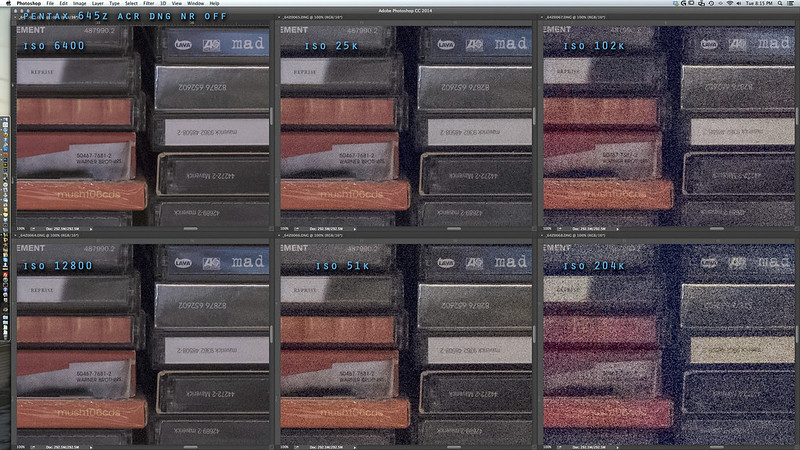
Low ISO test series; screen capture of 100% crops of DNGs converted via ACR. Click here for full size.
For the first time, I’ll be making all of the full size DNGs from the bookshelf test series available – you can download them here, until such time as I need the space in my Dropbox account freed up but at least for two weeks. These were shot with ideal shot discipline – focus with live view magnified, on a heavy tripod with mirror up and self timer; but under deliberately horrible light (mixed tungsten, fluro and LED) to see how the camera’s AWB would handle it. (Answer: quite well.) It should also give you a good idea of just how much detail is in one of these files.
Part of latitude is noise: by the time we hit ISO 51k, usable dynamic range is appears to be somewhere around the 7-7.5 stop mark (the amount will vary with your tolerance to noise); I can’t see any difference between ISO 100-400, there’s 1/2-2/3 stop loss at ISO 800, and roughly 2/3 to a whole stop thereafter. For a full size file, I place the usable limit at 12.8k for color, and 25.6k for monochrome. ISO 6400 will clean up almost completely with some NR. This is unheard of for medium format – and represents an excellent performance for cameras in general. At the pixel level, I’d say this camera is perhaps a stop cleaner than the D800E – not surprising given the newer photosite architecture and 20% (or possibly more) light collecting area – 5.3um pixels play 4.88um pixels. If you don’t need a full size file, oversampling and downsizing to 16MP – comparable to say the E-M1 and D4 – will yield some surprises: ISO 51k is very, very clean. It’s so clean I’d say it looks something like a ISO 2500 file from the E-M1, and an ISO 12.8k file from the D4 – and of course thanks to the downsampling, fine detail is much better, too. Food for thought for the reportage shooters – I certainly intend to make full use of this.
The slightly larger pixel pitch means that diffraction should theoretically kick in later than the D800E; the 645Z also has no anti-aliasing filter. On the D800E, you can see diffraction softening happening after f8-11, and it’s very noticeable by f16. I’d move that cut point somewhat later with the 645Z – to perhaps f16 with noticeable limits a bit higher – this is partially due to the larger pixel pitch, partially due to the longer focal lengths involved, and some technology by Pentax that supposedly corrects for diffraction. How exactly it does this is unclear – I suspect some sort of unsharp masking or a slightly different interpolation of the raw file – but the difference is visible, and better, even with the DNGs. It’s switchable, though I can’t imagine why anybody would want to turn it off. It’s also worth noting that the camera will record either raw in DNG or proprietary PEF format; both are 14 bit. The latest version of ACR supports the native PEF format – again, more investigation is required into whether there’s any visible difference between the two formats, but my testing up to this point suggests not. There’s also one minor firmware bug in the files – on my camera at least, no matter how I have the rotation tagging set, the images always seem to come out of the camera upside down in ACR despite appearing fine on the LCD. Overall, image quality is superb. I was expecting it to perform as a ‘D800 plus’; so far it’s met all of those expectations, and frankly, surpassed them. The 645Z extends the shooting envelope quite a bit beyond that of the D800E – not only are the files cleaner at the pixel level, but you’ve also got the benefit of being able to downsample. I’d love to see this sensor in something much smaller, with an optical finder, and with a fixed lens perhaps – GR Digital VI, perhaps?
I shot several hundred test frames during the course of making this review and familiarising myself with the camera; being cautious made me swap batteries out after every session, but the most I could get the gauge to move was lose one of the three segments after about 150 images shot mostly live view – this is an impressive performance given the size of the sensor, considering my D800E would probably be down 50% or so if shot under similar conditions. A second battery is probably recommended for heavy shooters to get through a day, but you’re probably going to run out of card space first – for the first time, I’m considering moving to 64GB cards. The 645Z also records video, which is another reason to consider larger cards. However: there are some unfortunate gotchas: bit rate appears pretty low – just 21mbps, there’s no way to get a clean HDMI out only from the sensor, and it doesn’t use the full area – you lose about 10% from the left and right, which actually makes the video size…the same as a 36x24mm sensor. So perhaps there isn’t much point after all, especially given there are better full frame options out there for video work. Oh well – you can’t have everything, it seems.
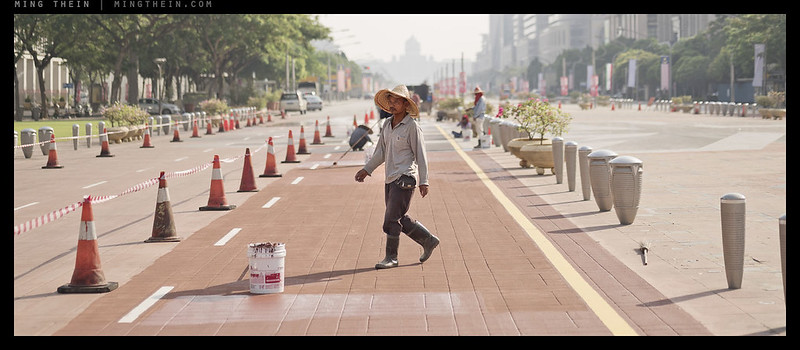
2.4:1 and still more than enough pixels left (28) to Ultraprint.
There’s no denying that with Sony’s entry to the medium format sensor game, the whole market has changed. Available light becomes possible, excellent, and not just a challenge; what’s especially interesting is the enormous difference in pricing between the Hasselblad H5D-50C, the Phase One IQ250 and the 645Z – all of which use the same sensor. Granted, the Hasselblad and Phase One bring leaf shutters, an (arguably) better lens selection in some areas, and interchangeability of the backs with your other (large format perhaps) cameras – but we’re talking a factor of three or more here. For the price of the IQ250 alone, you could get two 645Zs and a decent set of lenses – redundancy and two-body shooting if you want. Or you could buy a 645Z and subsist on second hand manual or early AF lenses and not spend much over US$10,000 – for a medium format camera with state of the art performance. You could even add the 645D if you decide you prefer the CCD ‘look’, or an older Phase One back with a larger sensor and a Hasselblad V system for the best of both worlds. Granted, as relatively ‘cheap’ as the 645Z is, it is still going to be far too expensive – and too much weight – for most photographers to consider; it’s a niche product and overkill for pretty much everybody but a very small group. But those whose pockets are deep or whose business can justify it now have a more interesting option. I’ll be revisiting the comparison in the next article – between the 645Z, 645D, CFV-39 and D800E. No way of getting my hands on the H5D-50C or IQ250, unfortunately – there isn’t even a Phase One dealer in my region; not surprising as the annual medium format market in Malaysia is probably not more than 20-25 cameras. That should give you a pretty good idea of the state of the industry.
But I digress. Perhaps the most amazing thing about the 645Z is not its pixel count, its high ISO ability, dynamic range, ergonomics, handling, battery life etc. – it’s the fact that it makes it so easy to get such incredibly high image quality; it has a shooting envelope many times larger than any other medium format camera, and in my experience so far, larger than even the D800E. Everybody who’s used medium format digital previously will be extremely cautious with the camera and slowly be surprised that they do not need to be; DSLR upgraders will shoot it without the benefit of context and not understand what the big fuss is about. I personally think this camera represents a significant step forward for medium format; it’s no longer as intimidating and the results can now compete with DSLRs under almost all conditions. Of course, high shot discipline and care will always pay off; those who have it will be rewarded with extraordinary image quality. Paradoxically, whilst most cameras benefit from being shot with the deliberation and care of medium format, this camera benefits from being shot like a DSLR – under such situations is where it’ll extend your image quality envelope enormously and bring previously unimaginable results. This earns it a ‘highly recommended’ rating from me, with one caveat: if you shoot primarily flash/ studio work, this is probably not your camera because of the slow 1/125 flash sync. For everything and everybody else – if you need the resolution, there’s really no better choice at the moment; Pentax deserve credit for not just brining this camera to market, but pricing it at a very sensible level. MT
I’ll be uploading images from this camera continuously to this flickr gallery.
The Pentax 645Z is available to buy here from B&H. Lenses are available here from B&H and Amazon respectively.
__________________
H2 2014 workshops now open for booking – Making Outstanding Images San Francisco, Chicago and Venice; Masterclass San Francisco and Venice – click here to book or for more info
____________
Visit the Teaching Store to up your photographic game – including workshop and Photoshop Workflow videos and the customized Email School of Photography; or go mobile with the Photography Compendium for iPad. You can also get your gear from B&H and Amazon. Prices are the same as normal, however a small portion of your purchase value is referred back to me. Thanks!
Don’t forget to like us on Facebook and join the reader Flickr group!
Images and content copyright Ming Thein | mingthein.com 2012 onwards. All rights reserved
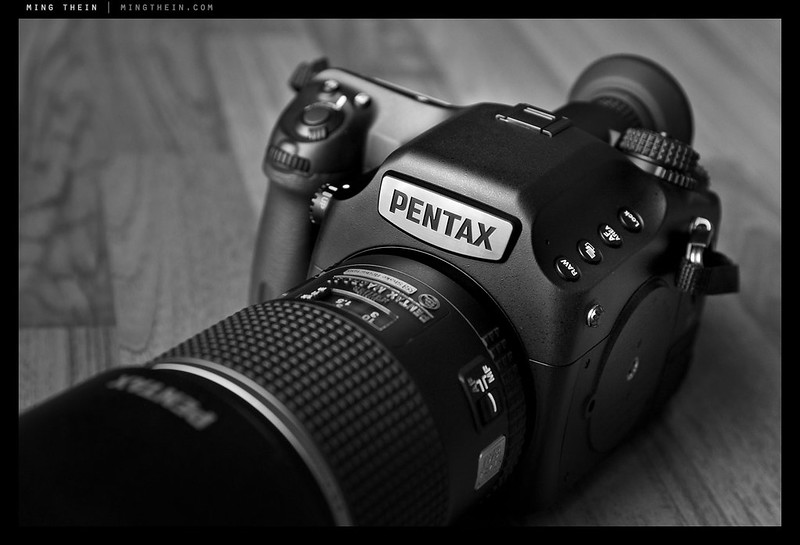



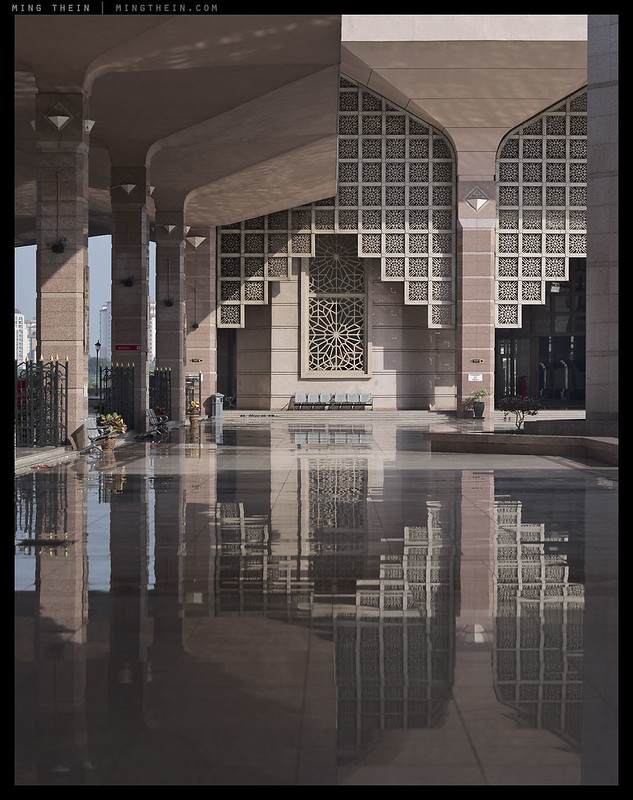

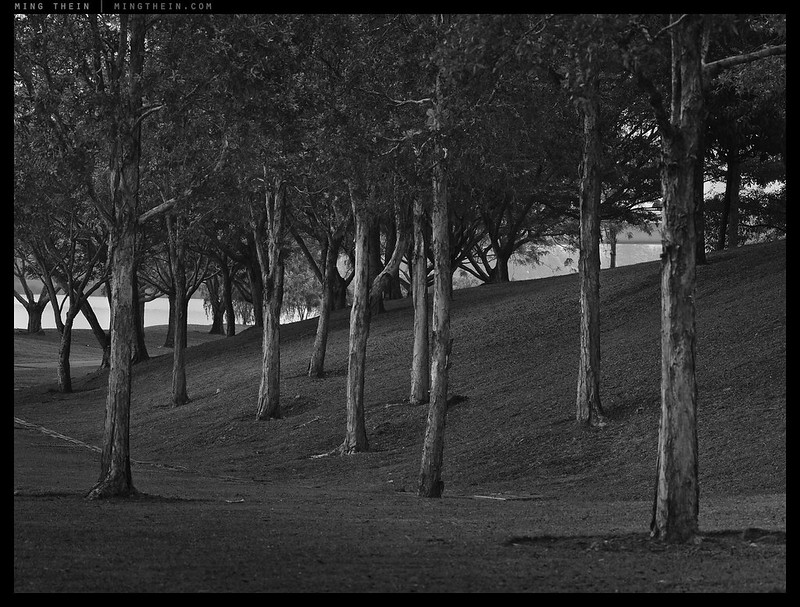
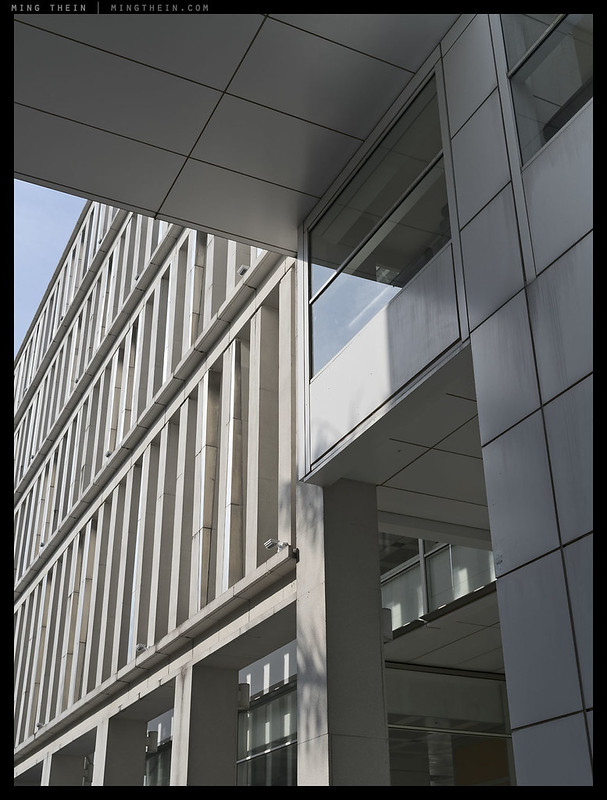
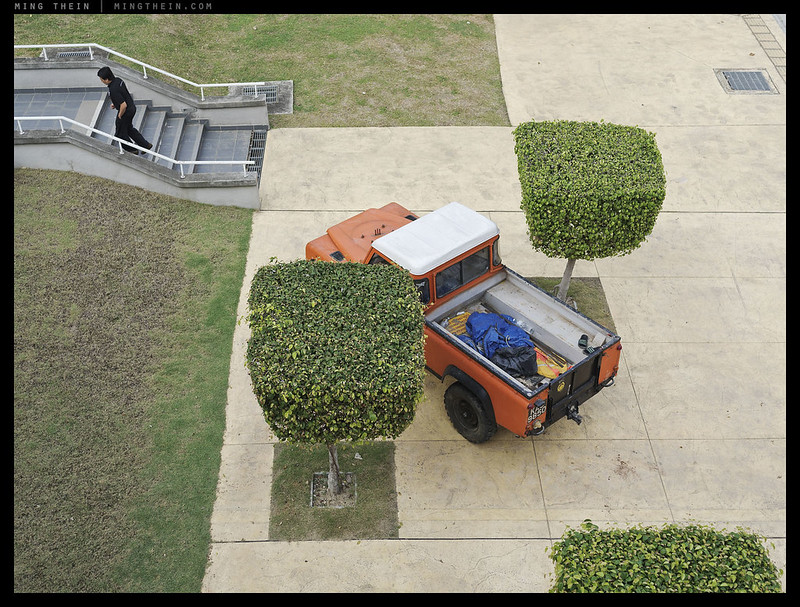
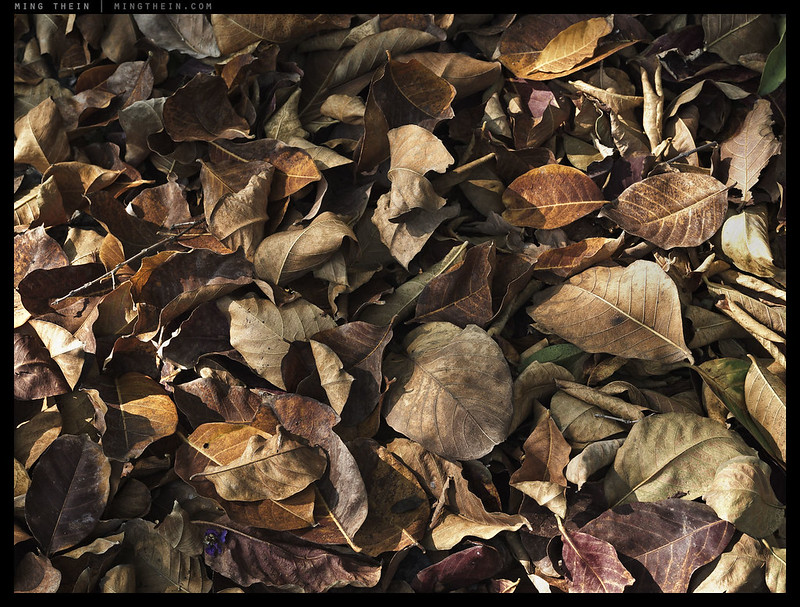
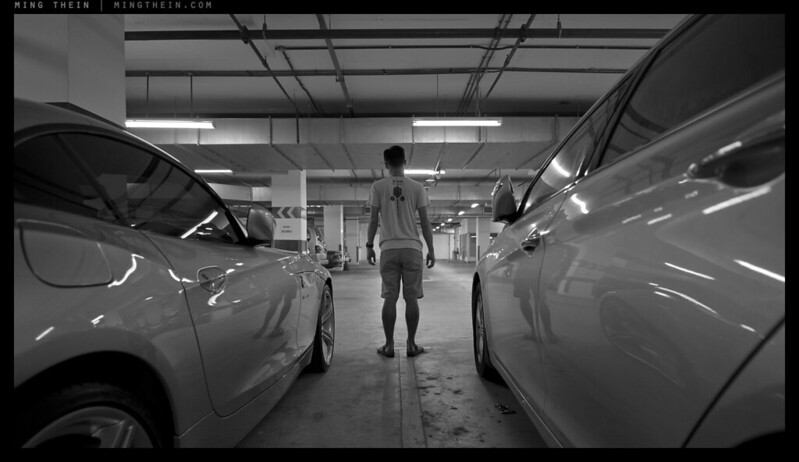

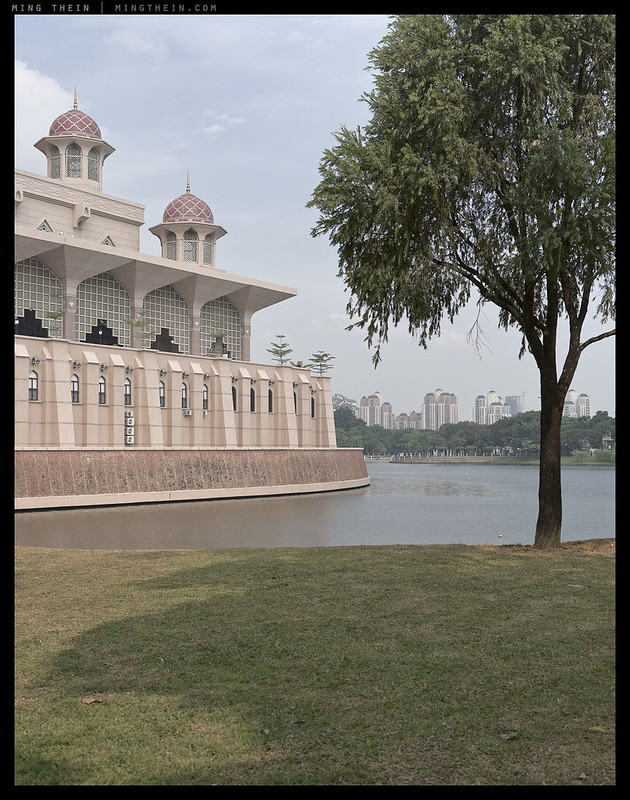

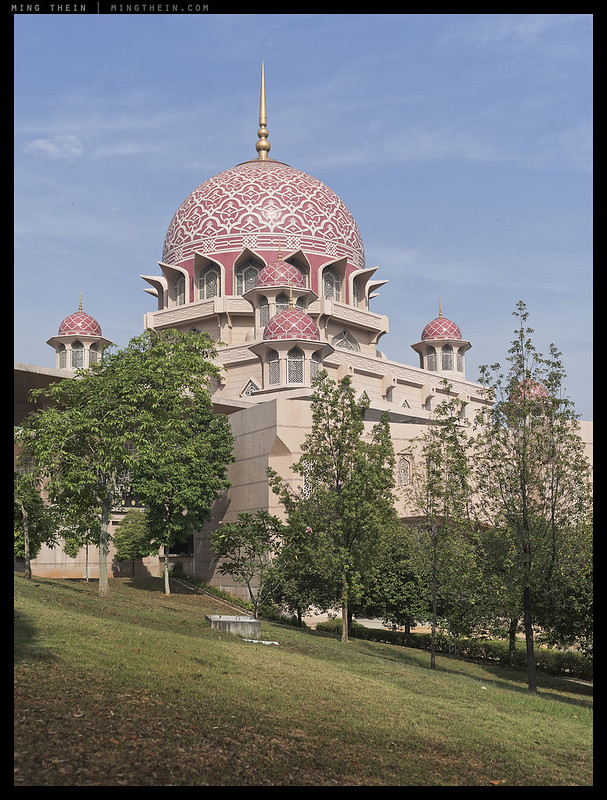
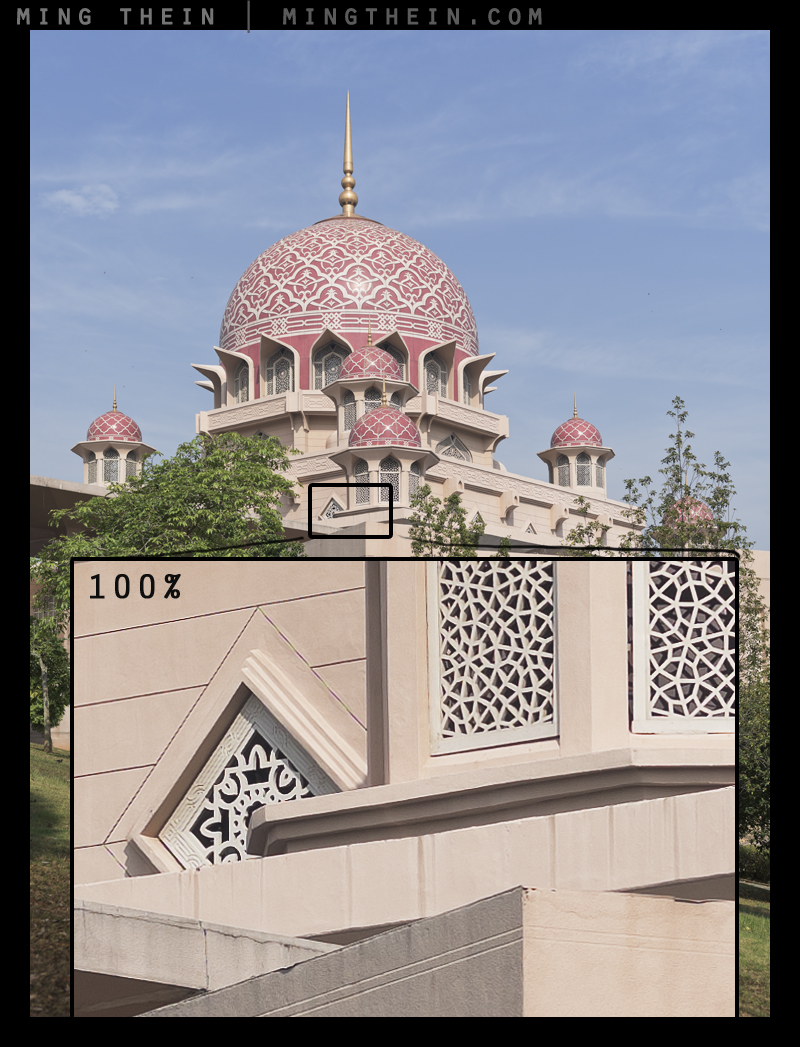

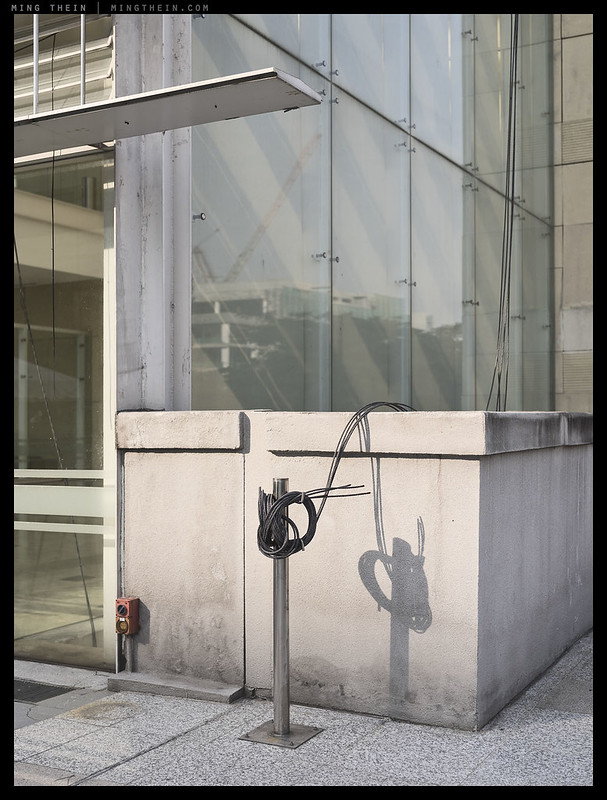
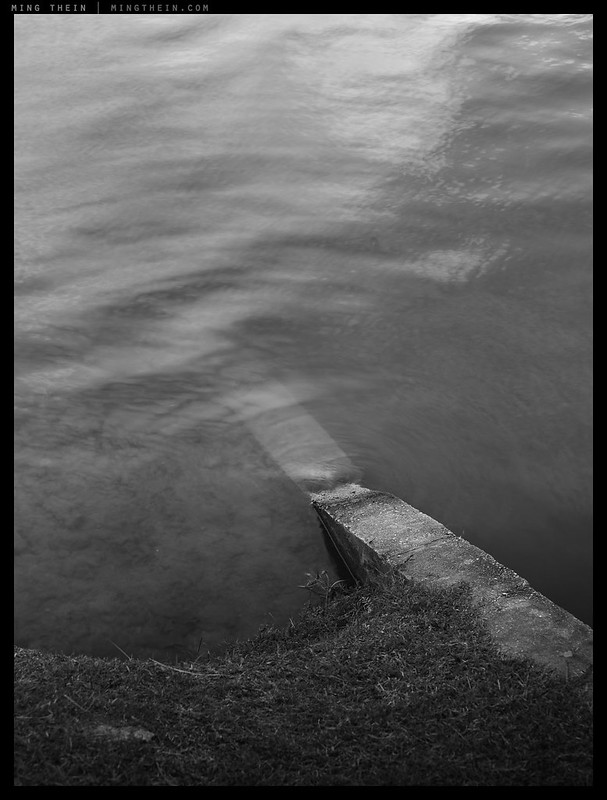







this camera is too expensive. more than a leica? for a pentax? even you guys won’t buy it only use it for review. you can buy a leica and a decent lens for that price or less.
A person might have a head, two arms and two legs, but that doesn’t make them a useful member of society either…brand isn’t everything. In fact, it isn’t really anything other than an ego trip for the buyer who cares more about bragging than making images.
Is there anything special you did to get the Color Checker Profile to work for you? I have tried to drop a Pentax 645Z DNG shot of the passport into ColorChecker and it just fails to recognise the target.
Thanks
Nope, but I balance colour by eye…not with the software.
Ah I see 🙂
Seems ColorChecker doesn’t like large DNGs so a 645Z DNG just breaks it. No word on an update – if one ever turns up 😦
Will revert to using my eyes
Thanks
Phil
I use my eyes. Works just fine…
Ming,
Thanks!
Great art. Great sense of humor.
Sorry that I’m just a photographer instead of a potential customer.
I was hoping to find some DNG downloads. But thanks anyway for sharing your thoughts, opinions, and art.
Dave
I don’t post bad images, and I’m certainly not going to release raw files to good ones. You’ll probably find the same with any photographer who actually cares about their work. Gear reviewers are a different matter entirely…
Ming,
First, thank you for a very thorough and thoughtful review. I will be returning to your site often to learn more. I would appreciate your thoughts on the following question, which I suspect others might be asking: 645Z or D810? This is really a two-part question… your D810 impressions, and Ricoh service.
A little background… I do landscape and nature part-time – stock and large framed prints. I currently have a D800E, and wholeheartedly agree with your 1/2x findings regarding camera shake. I find myself having to use unacceptably high ISO to get an acceptably sharp shot, especially with the 300 f2.8 and 200-400 f4 (on a beefy Gitzo and head). Large prints can’t live with muddy images so I’m considering either the 645Z or D810.
I was the very proud owner of a 645D until about a year ago. I purchased it and a cadre of FA lenses used. Having enjoyed a Pentax 645 (N and Nii) for many years, I was excited to get back to MF and the camera did not disappoint. What did was Ricoh service. It went in for repair of three issues. Early on, I did tests to determine noise characteristics at all ISOs and found that the right half of the sensor was considerably more noisy than the left half. Exactly half – right down the middle. Since it was rarely visible in actual shots, I decided to live with it. Then the body developed a bright single-pixel wide line about 40 pixels from the right edge in the light area of only very high contrast images. That was easy to clone out, but then I had amorphous black blobs starting to encroach into the viewfinder. (Pentaprism separation?)
The body came with a 3-year warranty from Sammy’s in California. It took the local repair company three weeks of back and forth with Ricoh to determine that the body had to go back to Japan to be repaired. I received confirmation that it had arrived at Ricoh in Japan. Then, Ricoh took six and a half months to fix and return the body to the US. Six and a half months. Even part time, I can’t live without a body for half a year. So as soon as it was returned, I sold it and all the lenses and bought the D800E.
I can’t believe this is typical. Over those 6 months, I had numerous conversations with Sammy’s, Precision Camera (the US repair facility) and Pentax USA – all any of them could tell me is that they had no update from Ricoh in Japan. People don’t generally spend $8K on a casual hobby camera body (much less a second backup!) – Ricoh must have known that I was losing money. They didn’t seem to care. Consequently, much as I would love to dive back into MF with the 645Z, I’m very reluctant.
So… is my experience with Ricoh service the rare exception? And is the D810 electronic first-curtain shutter and redesigned mirror mechanism really that much improved over the D800E?
Thanks for making it through this tome!
~ Scott
I don’t think your experience is typical, but I haven’t used enough 645D/Z bodies to be able to tell. The D810’s shutter/ mirror is better than the D800E, but it appears there are other tradeoffs – some long exposure noise that isn’t there with the D800E, slightly increased noise levels at higher ISOs, and the fact that you have to use PS CC to process the files which is noticeably slower than earlier versions for sharpening/ opening…
A detailed review and great images!! 🙂 But I can’t see the difference between medium format and other smaller formats, if you just show me the images without telling me they are taken by this great camera.
Not at web size. Medium format is overkill for that (and frankly so are most DSLRs).
I wonder if you didn’t jumped a bit too fast for the Pentax 645z while Hasselblad is releasing his version of the sensor for their back : http://www.hasselbladusa.com/products/digital-backs/cfv-50c.aspx
Yes and no – it doesn’t solve the wide angle problem; there’s nothing wider than 38mm for the V system on the SWC, or 40mm for the interchangeable lens bodies. This is not much wider than 32mm or thereabouts.
Also, knowing Hassy, I don’t want to ask the price…
‘not only did 1/focal length become insufficient, 1/2x was marginal under ideal conditions’
Strange, I haven’t had any problem with my D800 and a7r and I shoot them hand held at ridiculously low shutter speeds. Maybe it’s technique?
My hands aren’t that steady, so it may well be. Or it could also be your definition of/ tolerance for for what’s critically sharp at 100%.
I really love the “reformed tree”, its ingenious, amusing and great technical execution all wrapped together! It would be a good framed picture for a social room to add a bit of fun.
Thanks – it is available as an Ultraprint…:)
I noticed that. And I wish I could get one but I’m living the student life which, for me, means limited funds.
I think there is a very good reason to test the available leaf shutter lenses and exactly how they function with this camera.
The leaf shutter part is the real breaking point for many photographers and if these lenses are usable on a professional level then that adds a great value to the Pentax.
How sharp are these lenses really ? and are the usable are they in a real shoot ?
I’m curious too, but I’d have to get my hands on them first…
Great review of a ground breaking camera, I was invited by Ricoh to test the camera in studio here in NYC a week or so ago. The files from the camera both flash at base iso and available window light at 800 iso were excellent.
One caveat, I didn’t like the color of the files. They just did not look as refined as the files coming out of my H camera. But that might be because the format we shot was DNG.
Thanks. I don’t much like the native color either, but that can be said of pretty much all of the cameras I use; everything has to run a custom profile anyway so that I have consistency across multiple cameras.
Great review, thanks! It looks like Pentax really came through with a winning sequel to the 645D.
Gonna sell a few body parts and save up for one of these.
Haha, thanks.
Readers examining the DNG files should note that they come with processing settings applied. I was puzzled at first when I loaded them into Lightroom 4 and, e. g., saw color and detail collapsing at ISO 25.600 but then improving again at 102.400. I first thought Lightroom 4 might be too old to handle the 645Z, but restoring to default processing yielded the expected file qualities; presumably there are large differences when processing with different version of different Adobe programs.
In any event, thank you for providing the raw files and also for the review itself.
It might be saving the ACR 8 defaults from after I opened the files?
Maybe, but they didn’t appear as defaults within Lightroom. Did you export the files from Photoshop or just copy them from whatever folder they were in? I just tested and if I do the latter, I get the original file from the camera without any metadata, but if do the former, all changes (also keywords etc.) are appended, and the file size changes significantly.
I just copied them directly from the folder.
Several thoughts: 1. Best wishes and get well soon to your wife. I know this is worrisome for you, as a good wife is a precious jewel. 2. Thank you for this field report so quickly. How i wish i could get my hands on one of these cameras—the supply is very poor it seems, and I’m trying to do a friend who is a new Pentax rep a favor, so it complicates things…3. I’m wondering if the concerns about the flash synch are overstated? I would think that it would be mostly special cases where the higher synch would be needed, there are workarounds, and there are 2 older leaf shutter lenses available (I have the 75), and I think 2 more in Pentax 67. For my flash work, it’s all landscape or still life oriented, or non-moving models. So in all of those cases 1/125th isn’t a killer by any means.
1. Thank you. Stuck at the hospital pretty much around the clock so there won’t be any more images from me for some time.
2. I was told the first batch is completely spoken for, but no idea how many cameras were in that batch.
3. It depends on how much studio work you do, and what kind. I personally will continue to use my D800Es for that as I prefer the Nikon flash system, and that only syncs to 1/250. I never intended to use the 645Z for anything other than available light, so I don’t see it as an issue at all 🙂
Fantastic review, and absolutely stunning images. Well, this should have been expected, but here even those expectations were upped convincingly.
The main problem as i see it with the Pentax is the lenses system: if I go for the SDM lenses – I’ll spend a lot of money that will NOT be returned back when I sell them switching to the next system. And if I get old-AF/manual – well, it is not suitable for any quick work – so I’ll have to carry FF/APS-C DSLR too – making the total weight too large by any standards.
A possibility is to wait for compact camera with this sensor, rather then Ricoh, doesn’t it make more sense for Sony to do it? RX2MF with 35mm f/2.0 Zeiss tailored for this specific sensor? 🙂
“A possibility is to wait for compact camera with this sensor, rather then Ricoh, doesn’t it make more sense for Sony to do it? RX2MF with 35mm f/2.0 Zeiss tailored for this specific sensor?”
Good idea but I don’t think it’s happening any time soon (don’t get me wrong, a light mirrorless body with this sensor would be great). RX2 is supposed to be the new Sony curved sensor with Zeiss 35mm/1.8, probably announced in August before Photokina.
Thank you. I’m not sure about the SDMs not holding value; there are too few on the market to be sure. They certainly won’t plunge like the old AF glass since there aren’t lots of them around. What I’ve seen of the second hand SDMs is not far off the new ones – certainly no worse than Canikon USM/ AFS glass…
The rendition is subtle, looks like very little post processing was used.
You can’t put in what wasn’t fundamentally there in the first place. People complaining things look flat tend to forget that because output DR on screen is fixed, if you’ve got more input DR (i.e. the camera is capturing more dynamic range to begin with) then things will look even flatter still. But I personally like this ‘lightness’ or ‘transparency’ in an image; it’s one of the things that says ‘medium format’ to me.
I agree, it looks rich, but relaxed, full but not forced.
Great review as always ming , and an excellent set of images . Thanks for your time and effort for putting up such extremely high quality work on your site . And best wishes for your wife’s speedy recovery . and thanks again for sharing DNG files .
Thank you.
Nice review of what appears to be a camera that returns Pentax to prominence (not sure why the 645D didn’t have quite the same impact). One comment concerning your statement: “provision of two tripod mounts is a very useful touch. It means that a standard 90° L bracket off eBay will do a great job without having to pay even more for a custom unit.”; the two mounts render an L bracket unnecessary; you need only two lens plates.
Tom
Availability, probably.
You still need the L bracket; if you flush it against the side of the camera it won’t twist. A single lens plate can still twist if mounted at an odd angle or with a heavy lens.
I don’t know why you think this is so. A proper lens plate for the 645 can’t twist. There are two points of attachment: the screw and a pin.
True, but not all of them have pins.
Really Right Stuff makes a great one for the Pentax 645 family in the Arca Swiss compatible family: http://www.reallyrightstuff.com/s.nl/it.A/id.2143/.f It has the anti twist pin and is machined from a single bit of aluminum, including the pin.
Good to know. The arca universals are good, but the pins are easy to lose.
Fantastic images, and excellent write-up touching on all the important and over-looked issues.
But I hate you coz …………
now, I can feel my mouth moistening as if beginning to salivate over this cam 🙂
I think I am gonna have to go fondle my current cams so as to avoid the onset of GAS and bankruptcy. 🙂
This cam, and it’s sensor, make for the beginning of exciting times in MF photography; just think of how awesome it will be when we get this kinda sensor tech in a much larger sensor ( and mother of all dreams, in a 6 x 6 size sensor ). And what would be really cool is if we soon see competition in the form of an improvement in CCD sensors ( but I doubt that we will as I suspect that this Sony sensor represents the death of CCD, unfortunately )
Very much looking forward to Part II of your review.
Regards,
Plevyadophy
Two things, which you’ll see tomorrow: it’s not as big a leap as you’d think, and there are some things for which the Hassy V is still better.
Hello Ming. a very interesting review indeed. Thank you. The IQ250 has 14 bit, if you go on the PhaseOne website you will see that they mention that all IQ2 backs have 16 bit, except the IQ250. Like you, I saw it mentioned in many early reviews, but no 14 it is.
Thanks for that – I’ve amended the review.
I just added up the cost of your kit. For it being a “want” rather than a need, you must have some serious money just laying around. Wish I was so lucky.
Sorry Mark, but that just strikes me as needlessly negative. Callous.
There’s an element of luck, fortune, unfair advantage in life, we all know it. But to suggest that Ming paid for his own purchases on the back of luck is uncharitable to put it mildly. The glib quip about money just lying around sucks, Mark. Seriously.
I would wager that Ming worked his ass off — 12 to 14hr days, five six days a week, then another full but for free work day on the seventh just to stack the pipeline of articles for this site — I would wager he puts in more than most, and these are the fruits of that labor.
I’m not sure how you intended the comment, but the way it comes off is jealous and a little spiteful. I can’t find much of a positive spin for what you said there, and I work at spinning things positive for a living.
Why put want in inverted commas?
You don’t believe that Ming wanted the camera, or what?
Just don’t get all this ad-hominem negativity recently. Have a coke and smile, for God’s sake… sheesh.
And extremely insulting in an Asian culture. Frankly, there are some seriously ungrateful a****** rearing their heads these days. The amount of time I spend on this site could be much more profitably put to use elsewhere especially when a good portion of the audience just whine, complain, insinuate and are generally unpleasant.
12-14 hour days 6 days a week? If I should be so lucky, Tom. Remember I still have to shoot for a living to pay for the time to keep the site running. Try a minimum 16 hour days, every day for the last three years. Those who’ve been on my workshops know that I’m with them 10-12 hours a day, then put in another two hours at each end online. If I’m not shooting I’m generating content or replying to the hundreds of emails I get every day, excluding the comments. I have not had a vacation since 2011.
@Tom, and Ming
I think you both MAY have over-reacted.
When I read that remark I read it as complimentary envy (note: envy, not jealousy which is spiteful). Sometimes written words don’t “travel” well.
I get similar comments, and they have never been ill-willed and my financial position is quite poor ( as you know Ming ); in my case, I don’t club, smoke, or drink, and have no pets or children so I can save for what I want (often saving for ages, or as I did for a recent camera purchase, cut back on my weekly grocery bill).
So maybe the commentor meant no ill-will. I dunno, just saying.
Warmest regards,
plevyadophy
Perhaps, but it doesn’t change the fact that any such speculations are extremely insulting in Asian culture. And frankly, looking at his previous comments, I’m not so sure.
Hi Plevyadophy. No, I don’t think so… Starting with “I just added up the cost of your kit” says it all. No opinion on the camera, no opinion on the review, not even a thank you let’s not forget, just straight into moneybags Ming (and if he’d read the article he’d know at least one camera is a loaner, so it’s neither Ming’s kit or a real cost [yet]; this is irrelevant though—going there is past presumptuous and straight into rude).
I get that the very last line could be taken as a kind of compliment, it could be—but shouldn’t be. Why comment on yourself when talking about someone else’s luck? If you genuinely, honestly, thought someone was lucky, you’d just say it — “wow, you’re a lucky man. Good for you!” etc — with no mention of yourself. That’s how well-meaning and well-adjusted adults talk. Saying “Wish I was so lucky” isn’t that; and definitely isn’t that if it bookends a comment that begins “I just added up the cost of your kit…”
This is before we humbly point out that the harder Ming works, the luckier he gets. It’s almost as if there is a correlation!
It’s still possible that Mark meant nothing wrong — he can always come back and apologize — but, no, sorry, prima facie that comment offers only prima facie negativity. I say again—where is the slightest sense of it being about the camera, the review and not Ming (or Mark himself).
A storm in a teacup, but this guerrilla negativity — a snarky comment here, a bit of bile there — is so bloody childish and sucks for everyone. Why do it?
That’s a rather assumptive and insulting comment from somebody who benefits directly from me having it. What does my financial/ business situation – remember, I do this for a living – have to do with anything?
Interesting camera. I am not sure if I was sold on the camera after the review but I am looking forward to the comparison. And it is a shame you cannot compare the 645z with the Hasselblad or PhaseOne.
I will be comparing it to *a* Hasselblad tomorrow though…
It is not a medium format with out a leaf shutter.
If you say so…
Ming. that is very concerning about your wife and I am sorry to hear that she is so unwell. Dengue can certainly be a very nasty illness. You are both in my thoughts (as for the Pentax: you put together a fascinating article).
Thank you.
All I can say is: get well soon Nadia. Dengue is rough.
(Not speaking from first, but second hand experience)
Thanks for the write up, MT!
What gives with me and italics tags these days 😦
No problem – writing this from hospital now…
Thanks for another special review! I haven’t found the time yet to read all of it, but nevertheless I noticed a little mistake: The small detail frame shows only two of the three buildings in the big frame, thus suggesting an even higher magnification.
Looking forward to reading the rest …
That was just meant to be a guide, not an exact crop.
A propos photojournalism, I think that this Pentax would be superb, photographing huge crowds of people. Immagine an Ultraprint showing thousand people and being able to recognise each one of them at close-up inspection!
And you are right about a Super GR with this sensor, weatherproofed at that. It would be a king of the road.
I don’t think we have quite that much resolution, but it certainly means crowd photography won’t quite be the same again as with the 12/16MP PJ cameras…
Brilliant write up and photographs, as always. Thank you for taking your time to share your thoughts with us, I’m eagerly waiting for the Part 2, comparison with CCD.
When it comes to IQ I’m happy with my Aptus 75S but it’s a back attached to Hasselblad V and as a whole, only a tripod machine with exposures limited to 30s max and ISO 200 (well, I use it only at 50 and 100). I can imagine 645Z allowing me to shoot under conditions I really can’t with my current setup (light rain, low light where I’m hitting 30s limit for exposure time).
A question related to your comment about using Hasselblad V lenses with their leaf shutters. I can’t quite imagine how this would work, I believe that you would need to set lens to ‘F’ position which disables built in leaf shutter – or not? I don’t know if there’s a way to connect camera to lens’ PC-sync port to establish communication between them and from what I’ve read so far that’s how people use Hasselblad lenses on Pentax – set it to ‘F’ position (applies to CF lenses only).
There are 2 leaf shutter lenses for 645 system from Pentax, 75mm and 135mm. Both of them feature 4 shutter speed options, min 1/60s and max 1/500s. 75mm is hard to get, never seen one in flesh but have seen few 135mm ones and they’re not that crazy expensive.
In the documentation on Pentax website, I cannot find any mention about the longest exposure time. My back is limited to 30s and as far as I know only IQ260 offers an hour long exposures.
Last question is about the quality and feel of lenses (manual focusing and other bits) when you compare them with your Hasselblad ones.
Thank you
Thanks. I agree with you on the digital V: it’s a tripod only machine unless you’re shooting with flash in studio, in which case handheld is possible – though as with all medium format tripods are probably better anyway.
Using V lenses: we need the little bit of mechanics in the V to Leica S or V to Hassy H adaptors that cycles the leaf shutter in the lens by turning the screw and triggering the pin; this is the way the Flexbody works with digital backs. It shouldn’t be to difficult to hack that to a P645 rear mount and add a cable release in there. Connect the flash to the lens’ PC sync port and use that to trigger your exposure. A project for a rainy day, perhaps. You can of course use the lenses in the normal way – set aperture and stop down. No need to go to F mode; I’ve tried it briefly already.
Four shutter speeds doesn’t sound terribly attractive to me, but I suppose it does give you enough control…
Longest exposure time: B and T, you can either hold the shutter down, or press once to open and again to close…I have no idea how long the maximum time is. I haven’t found anything dark enough nor do I have the patience, but I plan to try some astrophotography in New Zealand later this year.
The older FA lenses are pretty plasticky, to be honest. The new SDM lenses are excellent – much like current Nikon pro glass, I’d say. No better or worse than Hassy V, just different – a more modern build.
Thank you very much for your response, it indeed sounds like a project for a rainy day 🙂
645Z is very interesting camera, seriously considering swapping my current Hasselblad based setup for this one, for film I would keep Mamiya 6. There’s something about Hasselblad though, can’t quite put my finger on it but, it’s the feel I suppose, fully mechanical beast and would be hard to part with it. I kept for the same reason good old Leica M6 even though I hardly use it.
I was very surprised how 50/4 FLE performed on 48×36 back – sharp corner to corner, but I shot at f/11 (landscapes). Would be interesting to see how Pentax 55mm lens performs in comparison and/or 35mm one.
If you need the leaf shutter though, I’d say stick with the Hasselblad. If you plan to use it as an available light camera, then by all means…
Agreed on the feel. The 645Z is like a DSLR – solid, well built, but still a DSLR nevertheless. The Hassy V cameras are almost objets d’art.
My 4/50 FLE is good at f5.6 in most areas, f8 corner to corner – but it’s difficult to tell anyway because most things tend to be out of the focal plane…
“It’s worth noting that leaf shutter lenses top out at 1/1600 for the most part, or less (1/500s on my Hasselblad V, which is terrible for tropical light”.
Please note that with a Phase One body with a LS lens can use EITHER the leaf shutter (flash sync up to 1/1600th) OR the focal plane shutter (up to 1/4000th). This means there is no limit on ambient light shooting. You can use f/2.8 or even f/1.9 in bright sunlight.
If you’ve never used a Phase One system you might assume that any camera with the same resolution is the same as any other camera as that resolution. There are very good reasons why the IQ250 is selling really well, even at a significantly higher price, and good reasons to go with the $12k entry level Phase One kits even though they are 10mp less than the 645Z.
[bias alert: I sell Phase One systems, and never claim to be unbiased]
I stand corrected on the Phase One body, then.
However, having emailed P1 multiple times both as a prospective customer (I was looking at an IQ180 pre-645Z announcement) and to request a review loaner for the IQ250 and never receiving a reply, I have to say frankly that their customer service in this part of the world at least is a disaster. Not having any opportunity whatsoever to demo these systems – and not for want of trying – means that there’s just no way I can have any degree of familiarity with them.
I’m not questioning the price – I’m sure there are features that justify it for some people – but you’ve really got to know you need them.
IQ250 is spec’d for an hour. All indications are it can do significantly longer, but it’s hard to find situations to test it in (even star trails are hard, requiring you to be very very far from city lights before an multi hour long exposure is useful). P45+, P30+, and IQ260 are also all spec’d for one hour, and in my experience max out around 40-50 minutes for those who are very strict about image quality.
Do they do dark frame NR subtraction afterwards (i.e. the actual capture time is 2x exposure time?)
Ciao Ming, just a slightly off topic question: (I’m convincing my gf to buy one of your Ultraprints) actually I’m using Em1 and Ricoh GR, I live in Italy, near Venice, and I’d like to know if with the above mentioned cameras Ultraprints are possible, and if so, how can I find/ask for having it?
The E-M1 – no, unless you’re okay with 6×4″. GR, yes. Different level of pixel quality from the two. But it isn’t just the camera, if you don’t have the shot discipline then the file might not be good enough to begin with. It isn’t quite so simple as asking for it unfortunately; part of the process is proprietary, and part of the process requires the photographer to be physically present to tune the file after viewing successive proofs. We (the print master and I) spent many hours and reprints getting each file perfect. He can’t do it without me as the ultimate artistic intention is the prerogative of the photographer, and I can’t do it without him as he cajoles the hardware. But you could try getting in touch with Wesley Wong at Giclee Art all the same…
Yes, the lab and photographer should always work together. It happens when I print on Fine Art paper at a friend lab. I’ll try to figure out if something can be done, thank you so much for the ultrafast answer! 🙂
With 6×4″ you mean feet meaning approx. 183cm x122 cm ?? Right? I think thats sufficent for 99 percent of the readers and users here….;)
thx!
No. Ultrprint. Inches. Not feet.
Thanks you so much!
So 15,24 x 10,10 centimeters not much….so omd system no way….at least 24 mp….
Nope, not much. I have done up to about 8×12″, but anything beyond that and you can clearly see there isn’t enough detail.
One remaining question to this…so its clear d7100 and d600/610 still better than d7000 and omd em1…
But how huge is the impact of the sensor size?? Would there a noticeable difference between an omd em1 and a d7000…both 16mp but one apsc one m43….higher pixel pitch, more detaills/information vs. larger pixels, but less noise…..what would be the difference visably on an ultraprint???
Not a fair comparison because the D7000’s sensor is one generation behind the E-M1. At low ISO, minimal difference – perhaps a stop in dynamic range in favour of the larger sensor. Hard to say at higher ISOs because I’ve never directly compared the two. I think they’re fairly similar from memory.
You don’t get more detail because the sensor is bigger if the pixel count is the same. You probably won’t see any difference between them in an Ultraprint, both will start to fall apart beyond 8×12″ or so.
Good thing I really cannot afford one (not to say it isn’t a bargain though!)…let alone the lenses! But sounds like they got it right, and if I win the lottery, I will definitely buy one.
Will you be experimenting with the 645Z for film negative digitising? And what about your commercial watch work, or will the lack of tilt-shift and limited flash sync speed prove too limiting? All-in-all a very interesting option…
There’s not much more resolution in the best of negs than the D800E picks out already – certainly not enough to justify using this for scanning. Plus my macro only reaches 1:2 for 88x66mm coverage in total. Plus, why change something that isn’t broken? 🙂
I don’t plan to use this for watch work – not because of flash sync (you’re stopped down so far that ambient is zero anyway) or tilt shifts (there’s always stacking) but rather because retouching 51MP files would take an age; the D800E’s files take in the region of half a day as it is…
Ian, how wedded are you to digital? And how much would low light photography be an issue?
A 645 NII is plenty awesome and you’re actually getting a bigger sensing area. Scan the negs/positives at 3200DPI and I think you’ll be surprised at how little there is in it between what you’ve got there and a D800 file. The bonus here is not in matching what you’ve already got, it’s all the medF goodness a D800 or a 645Z can’t quite offer.
A clean 645 NI or NII used, a lens or two, plus new Epson V750 doesn’t come close to needing lottery funding. More like a few months saves, and you’re there.
You have to start from square one understanding scanning, then film exposure, then making film exposure and scanning together sing… You will have to work for quality that’s had a lot more simply with digital—but the quality is there.
It’s not cut and dry though—and if the idea of film doesn’t appeal, just a little, in the first place, then it wouldn’t be sensible. I guess I’m asking you how much you want the format against the platform.
If it’s the format, film is worth a try. The water’s fine 🙂
Superb Images, as usual!
Thank You.
Thanks.
Ming, thank you so much for taking the time to write such a detailed and informative post on the 645Z. Your images look great and your writing was most informative. I’m looking forward to the next part in the series and I’m hopeful that you will do some CCD vs CMOS comparisons that involve skin tones (portraits, head shots, fashion…). It will be interesting to see how the Z holds up in the portrait arena in spite of the Z’s lack of leaf shutters, faster shutter speeds, etc.
On another note, your images are consistently sharp and I was wondering how you found the 645’s glass compared to your Hasselblad glass? I currently shoot with a Hassy CCD and I’ve been spoiled (IMO) with their glass, true focus and that magical look of the CCD. However, I must say that right from its introduction, I’ve been intrigued with the flexibility and DSLR characteristics that the 645z has to offer, especially for its price point. The design should yield a much broader level of potential use – always a good thing when spending that kind of coin. I was wondering if you have any opinion on the comparison of the 645’s vs the Hassy’s glass now that you have used both systems?
Lastly, any additional comments on the focus tuning would be most appreciated. I shot a 645Z last week at the NY introduction and although I was very impressed with the camera overall, my test files lacked ‘tack sharpness’ when I uploaded them to my computer. My suspicion after seeing your images is that it was user error, lack of focus tuning or a camera setting. Any thoughts would be most appreciated.
Again, thank you for such a great article. It is hugely beneficial in helping us to get a better understanding of a camera that has the potential of be a ground breaking, affordable MF camera. It’s an exciting time for technology right now, and I can only imagine what the future will bring!
Thanks. No, sorry, no skin tones in the next comparison. Firstly, I don’t shoot fashion, secondly, my only model (wife) is in hospital with dengue, so I’m frankly lacking in test subjects. You’ll have to wait for somebody else with more experience and interest in that area. I did shoot some things with tricky colours under suboptimal conditions as a torture test though…
I’m not a big fan of the Fujinon-derived Hassy H glass; the Zeiss V glass has much better microcontrast and overall ‘pop’. This was one of the reasons I initially went for the CFV instead of a H4D. Some of the Pentax lenses – the 25/55/90 SDMs specifically – are up to the level of the best Zeisses for Hassy V (40 IF, 50 FLE, 120 Makro) but the rest are best used stopped down. Focus tuning: you definitely need to do it for every camera, regardless of manufacturer. I found for the 645Z the older screwdriver lenses needed far more adjustment (sometimes more than the camera had available) than the SDMs, which were +/- a few points most of the time. The more resolution you have, the more critical this becomes. I’ve not had a single PDAF camera which focused perfectly out of the box. The good news of course is that most of them have live view these days, and that does focus perfectly all the time.
It’s also quite possible that shot discipline and workflow play a part in this, too.
Sorry to hear about your wife. Hope she gets better soon.
Thanks, so do we…
Just saw the comment on Nadiah, hope she gets well soon Ming.
Thanks.
Best Wises to both of you!
Thanks Eric.
Thanks for the quick response Ming and I hope your wife has a speedy recovery.
Thanks Paul.
Just read that Nadiah was in the hospital…. sorry to hear that and I hope she recovers quickly.
Thanks Jeff. I’m headed over there again now.
Best wishes for your wife.
Thanks.
Best wishes for your wife’s speedy recovery!
Thanks Andre.
Ironically, I have just been released from hospital, in Taman Desa, after a nasty dengue infection, which caused me to get behind on a series of excellent tests/posts, but which have given me some great reading to catch up on, as I am doing now! If it’s any compliment, your blog was the first that I went to upon release, to catch up on my reading!
I know how horrible it can be. 😦 So, my very best, sincerely meant, wishes for her full recovery. 🙂
Thanks – on both counts. And hope you’re feeling 100% soon!
Hi Ming
exceptional shots even in a review article! Love the reformed tree and the 2.4:1 man…;)
Would be nice to include the new d810 in your comparison but i guess you dont get one testing cam or dont wanna upgrade your d800e for studio purposes…but maybe the 1 stop better 645z –>d800e is less to the d810….nevertheless resolution, light gathering as well as pixel size advantage speaks in 645z favor…but for those who only can afford one system/cam for reportage the d810 will be better compromise…i think maybe a gr v (or rxIII) for stealthier shots, b&w and street photography 28mm shots an be better cropped to 35 mm shots than the other way around ;)!
Excited on part 2….
PS: By the way Pentax is not the only one lacking in tilt &shifts Fuji, sony, olympus and nikon as well. The latter has a huge gap in lens lineup the 17mm range (the best t&s lens 17 f4 canon esp. for arch.)……so pentax please release a 17mm equiv. t&s and nikon anyway..
Well, Nikon here isn’t going to lend me a camera – I wasn’t even invited to the launch event – and B&H can’t send Nikon loaners overseas, so the only way for me to review one would be to buy it. That only happens if I’m going to use the gear for my own work, and with an D810 – unlikely, because the cost doesn’t justify the relatively small improvements over the D800E.
Comparison to the GR is rather meaningless as these are two completely different cameras with different purposes and very different output quality.
Fuji and Sony I don’t consider to be serious professional system contenders because of the lack of any sort of support. Nikon has 24, 45 and 85mm tilt shifts, and 28/35mm shift-only lenses. I wouldn’t call 17mm a ‘huge gap’ – honestly, I’ve rarely felt the need for it and I suspect I shoot far more architecture than most.
Top effort again Ming, though I wouldn’t expect anything less.
The more I think about it, price is still a barrier, but still low enough to give it proper consideration. Lenses for me is a big issue – they are absolutely massive! Anything that makes the Otus look ‘cute’ is daunting. Having said that I think one could have a lot of fun with just the ‘kit’ lens.
I was one of those seriously considering this camera, but as an amateur, the cost/benefit for me is to pick up a D800E/D810, enough resolution and if I’m honest I don’t print enough to justify it. I think Ming, you may be one of a few who will know how to effectively print from the 645Z, so I look forward to more prints later in the year (I’m seriously running out of wall space btw…..)
Thanks Junaid. I wouldn’t say they make the Otus look cute; only the 90 SR falls into that category. The rest are pretty unintimidating, especially the pancake-like 75mm. That said, I too should have stuck with the D800E/810 as a rational choice especially seeing as I don’t plan to use the 645Z much for commercial work. It definitely falls into the ‘want’ category far more than need, but hey, I’m not complaining.
We’re trying to see if we can cram more pixels per inch into a print, but so far it looks as though the only way to go is up. 🙂
Ah, i think it was one of your instagram pics i remember. That must have been the 90! Heck even as a commercial photographer you need pleasure with the gear you are using for your own personal work!
Darn, i had a bad feeling you would say the only way is to go larger….maybe i need a bigger apartment.
Yes, that was the 90 with a little perspective help. Whatever you’re using should be pleasurable full stop, otherwise it’ll just land up being frustrating.
I’ve shot the Pentax 645nII film camera and my favorite lenses for that were the 55mm/2.8 manual focus and the 150mm/2.8 FA autofocus lens. Both are very good, on film anyway. The 150mm is big but not heavy, and has good sharpness and lovely bokeh. It’s an older screw dive model, but perhaps worth trying as a telephoto for the 645Z or 645D. Also great are the 120mm macros both manual and FA versions, but they are slow f/4 designs and quite heavy, and both get physically very long at 1:1 magnification. I’m sure the new 90mm/2.8 macro is a better choice for those who want the best for the 645Z.
The 75mm/2.8 is probably the oldest lens design of the lot. Basically it’s a modified Planar type lens designed for the first generation of Pentax 645 cameras, then repackaged in a cheap plastic autofocus barrel for the 645n and later cameras, and never updated optically. I have one and it’s OK stopped down to f/11 on the 645nII, but it has pretty soft corners wide open. I’ve tried it with an adapter on my D800E, but it gave pretty soft results, even stopped down, though I suspect the focus was off. I was not using Live View, so I should try it again. The 55mm/2.8 manual 645 lens worked much better on adapter on the Nikon body.
Funny thing is my 75 is actually not bad at 5.6 and below; sample variation perhaps? It feels and performs quite similarly to the Hassy V / Zeiss 2.8/80, which is also a planar (that explains a lot) – adequate on film at f2.8, adequate on digital at f4, but better stopped down. And handy thanks to its size.
I should give the 150 a look. Comments on that vs the 200 on the 645D seem to be mixed; perhaps it’s sample variation. Problem is these lenses tend to be difficult to find outside of Japan or ebay. The 120 has a good reputation, but I’ve already got the 90 – which is flat out outstanding and adds optical stabilisation too – and the Hassy V (Zeiss) 120 and an adaptor, which is equally impressive…
Just like reading a review of a supercar I’ll never be able to afford, I read it mainly for the pictures. 🙂 Very nice job, and I’m looking forward to the prints made from this monster.
Hah! Supercars coming up in the second part, actually.
And the first ultraprint is already available 😉
I just saw your latest Flickr uploads … wow! I’m a bit saturated with prints right now (2 just arrived, and then awaiting the 3 from you), but otherwise I’d be tempted by the upside down tree.
We can always add in one more before delivery of the next batch (I just signed them yesterday actually. 🙂
“This part alone is going to be a 4500+ word monster” is exactly what I wanted to hear as I sit down to the final day of a working week that’s left me thoroughly disgruntled; I shall stick it to the man by reading the whole thing while I should really be doing something else!
I think it’s so long you may well find yourself sticking it to several men.
Haha!
And I’ve just bought an ultraprint. What an image. Paypal just clicked everything through. I’ve got a confirmed paypal mailing address. Do I need to add any additional postage for the UK?
Thanks Jon! Nope, DHL Express is included. 🙂
Drool worthy! and the photos are awesome as well…
Thanks!
Beautiful images and an excellent review! Thank you!
Thanks!
Yey! Excellent review!
I’ve got to ask though, will there be a shots like the ones you get from photojournalists? Head shots or 3/4 portraits?
Thanks. At some point I’m sure I’ll do that, but not anytime soon. This kind of camera is overkill for portraits (and probably requires far too much retouching anyway). I’d prefer to use something a bit more forgiving…
Very interesting stuff all around. It’s an interesting camera conceptually; I can’t imagine the percentage of people who would seriously consider buying one of these (unless they plan on using it for work or just like to flash their cash), yet there must obviously be a market for it and Pentax must have been doing some serious market research to price it so (relatively!) low.
A handful of questions which came to mind while reading this:
1) Do you think that when you get a new camera, especially something as interesting as this one, it gives you a creative shot in the arm? The reason I ask is that a number of the shots in this review are really, really impressive – heading into flat-out awesome – while I didn’t get the same “wow” factor from the recent Melbourne entries. (I say that both with respect and in context, though: the Melbourne shots are still better than anything I can do!)
2) The MP count is obviously stratospheric, and the detail is clearly very impressive indeed. Yet doesn’t this almost limit what you can do with these files to do them justice? Other than printing them extremely large or viewing on a very big screen, any other manner of displaying such files seems to be doing them a disservice, or at least not making use of their potential.
3) This has nothing to do with the camera, but it occurred to me anyway: if you make an Ultraprint which involves a human or a recognisable building, do you need a model / property release? Or are releases only for advertising? I’m curious how the selling of a print is defined. It’s obviously a commercial venture, but it’s not trying to sell anything other than itself.
Either way, the Pentax “picture theft” debacle seems to have had a pretty happy ending all in all!
There are more people than you’d think – easily 80% of my Havana masterclass group was giving it serious consideration, for instance.
1) Thank you! Yes and no – sometimes I feel inspired, sometimes I don’t. I was a bit frustrated with this week because I had terrible atmospheric haze for most of my time with the RX100III and the 645Z, too. Melbourne – subject matter? Weather? Personal preferences? Could be one of many things. Photography is highly subjective after all.
2) Not really, though not all subjects have enough detail to justify that kind of resolution. However: take a high ISO 51MP file and downsize it to E-M1/ D4 size, and prepare to be blown away. There’s still plenty to be said for oversampling.
3) It’s art, so generally, no. It depends on where the original image was shot – some jurisdictions (Hungary, recently, for instance) require it, others don’t – what’s public is public. And as you point out, it isn’t promoting anything or anybody.
Thanks for the review. Cathay Photo in Singapore is the local distributor for Phase One and Mamiya Leaf cameras by the way.
I guess they didn’t think I could afford one when I went in to ask last time 😛
Thank you Ming for this detailed and analytical “part 1” review. For those of us who love landscape photography and print big your comments are always very welcome. I can’t wait to see part 2 and hopefully you will expand on the relative quality of the available lenses.
Kudos for being the first to post a proper review of this ground breaking camera.
Thanks Paul. There are a lot of lenses between the systems I’m comparing…and that would take a while. Let me see how best to distill it…
Wow, this was fast. Congrats on being the 1st in the world to shoot with a production model and post a wonderful review with great images! You’re on a roll, keep up the good work!
Forgot to mention, thanks for generously sharing your DNG test files on dropbox too.
No problem.
Thanks Ciao – now for some coffee to keep me facing the right direction…